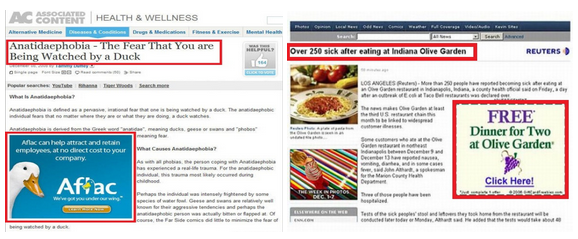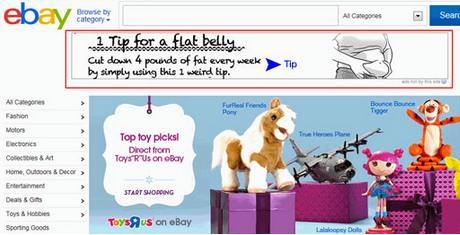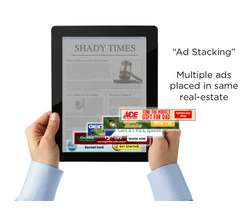A Google search for “advertising fails” gives a wide variety of examples. Here’s two that piqued our interest:

Programmatic advertising can be used to target audiences more specifically; finding the right user, at the right time, and the right ad. However, this also creates a black market which is making use of this automatization of online advertising.
Here are the four biggest challenges we nowadays face in this industry.
1. Bot traffic, also known as click fraud
Advertisers expect that the ads they’re paying for are viewed by the targeted audience: actual people who might be interested in buying the product they marketed. Unfortunately around 11% of the viewed or clicked ads are bot traffic. You have the Google bot, and there is the bot designed to click on ads. They both visit your site, increasing your analytics hits and traffic. They both have very low time on site. The only difference, really, is that the Google bot is doing something beneficial, feeding data back to the index. The fraudulent click bot is just inflating your traffic statistics and potentially messing up your advertising.
2. Ad Injectors
Ad injectors place ads within a website without the permission of the publisher, and even without their knowledge. Therefore they are not paying the publisher for the placement of the ad. Google’s Online Security Blog explains ad injectors very well.

3. Ad stacking or ad stuffing
With ad stacking (or stuffing) multiple ads are placed upon each other but only one ad is displayed. Simply put; there is only one ad that shows, however more ads are paid for and don’t get the possibility to generate profit by clicks or views.

4. Ad viewability
The IAB stated in March that there is no ad viewability when an ad has not appeared for at least 50% and for at least 1 second (for video at least 2 seconds). This also means that if an ad can only be seen by scrolling down there is no viewability until the user scrolls down in their window. These (ad) placements are called ‘below the fold’, referring to the days when the newspapers were folded in half. It basically comes down to the fact that just because the ad has been served on the page, doesn’t mean the ad was viewed. Viewability can also be compromised by ad blockers, by an ad being not mobile compatible or by not having the ad loaded in time before the user clicks through to another page.
It’s a good thing you now know about these issues in online advertising, but how can use this to your advantage? We would like to share some tips and tricks with you.
Tips on how to optimize your results
- Domain transparency: specify the URL and make sure that the relevant categories for the content of the website are known with the ad networks.
- Collect data: information on website visitors can help create Private Marketplaces (PMP). A Data Management Platform (DMP) can help out with this for example. This could help monetize specific traffic in the most optimized way.
- Use and/or test different ad sizes to optimize revenue
- Trying different networks can give you different quality (eCPM, fill rate)
- The location of the ad: is your ad above the fold, below the fold, a header or a footer?
- Make your site and ads mobile and tablet compatible
- Proactive Analysis: investigate irregularities and fluctuations.
- Google Analytics can easily filter bot traffic. Under the View panel in your settings, you’ll find View Settings. You’ll also find a small heading for Bot Filtering with a checkbox that reads: Exclude all hits from known bots and spiders. Check the box, and you’ll filter out the bot traffic.
Now it’s your turn: we want to know the worst advertising fails you’ve ever seen. Get in touch!